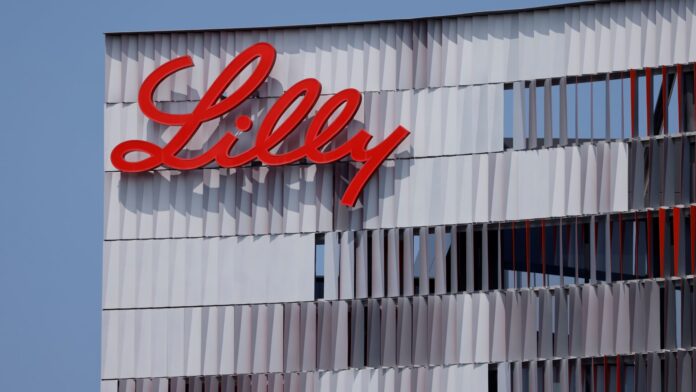Bank of America expects Eli Lilly’s Mounjaro could generate as much as $100 billion in annual sales by 2035, if it’s approved to treat obesity and several other illnesses. The Food and Drug Administration granted approval in May to the once-weekly injection for the treatment of Type 2 diabetes. However, the company is actively looking to use the drug to treat seven separate illnesses. Its potential use as an obesity treatment has been closely watched, but it also could treat kidney disease, sleep apnea, NASH, pre-diabetes and have cardiovascular uses. Research for these applications is ongoing, with many of the trials in phase 2 or 3. “While there has clearly been a bullish view of tirzepatide in T2D and obesity, we think there is significant long-term upside in the totality of its indications,” wrote Geoff Meacham, in a research note Friday. Mounjaro, or tirzepatide, uses a combination of incretin hormones, known as GIP, or glucose-dependent insulinotripic polypeptide, and GLP-1, or glucagon-like peptide-1, to help improve blood sugar levels. Treatment with the drug for Type 2 diabetes costs about $12,700 annually. Meacham reiterated his buy rating on the stock and boosted his price target to $375 from $360 previously. That implies 18% upside from where Lilly shares are currently trading. The stock has enjoyed a strong run this year, with shares up 17% versus the S & P 500’s 15% decline. “Of course, we recognize that Lilly’s ~30X P/E (2023) reflects optimism (peers: 11X), but its differentiated growth profile and pipeline progression still justifies putting money to work in shares at current levels, in our view,” Meacham said. The analyst is drawing some of his optimism from strong prescription counts for Mounjaro since its debut in May 2022. He said the pace has been “meaningfully higher” than launches of other GLP-1 products such as Novo Nordisk’s Ozempic and Lilly’s own Trulicity. During its second-quarter earnings call, Lilly said 72% of patients starting treatment with Mounjaro had been new to the GLP-1 category. Of the 28% of patients that switched from another GLP-1 drug, 30% came from Trulicity. In addition, Bank of America recently surveyed health insurers to see if they would be likely to provide coverage of obesity medications, and was encouraged by the findings. Even, if large health insurers place restrictions on the drug’s use, Meacham expects it could generate as much as $4 billion a year as an obesity treatment. In the least restrictive scenario, Mounjaro could tally as much as $48 billion in sales for this use, he said. Meacham also considered the drug’s use for other illnesses to reach his $100 billion-plus sales forecast. But he hasn’t factored in these potential sales into his stock valuation. Indeed, risks remain as the clinical trials have not been completed and FDA approval cannot be assumed. “While we think tirzepatide would be a blockbuster if only approved for T2D and obesity (phase 3 completed), … these additional indications offer further upside,” he wrote.
© heardonwallstreet.com


